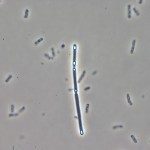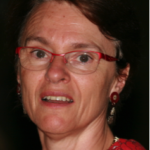Lien vers Pubmed [PMID] – 1900939
Proc. Natl. Acad. Sci. U.S.A. 1991 Mar;88(6):2212-6
The regulatory gene levR of the levanase operon of Bacillus subtilis was cloned and sequenced. It encodes a polypeptide of Mr 106,064 with two domains homologous to members of two families of bacterial activators. One domain in LevR is homologous with one region of bacterial regulators including SacT and SacY of B. subtilis and BglG from Escherichia coli. Another domain of LevR is homologous to one part of the central domain of NifA and NtrC, which control nitrogen assimilation in Gram-negative bacteria. The levanase promoter contains two regions almost identical to the -12, -24 consensus regions present in sigma 54-dependent promoters. The expression of the levanase operon in E. coli was strongly dependent on sigma 54. Taken together, these results suggest that the operon is expressed from a -12, -24 promoter regulated by a sigma 54-like-dependent system in B. subtilis.




